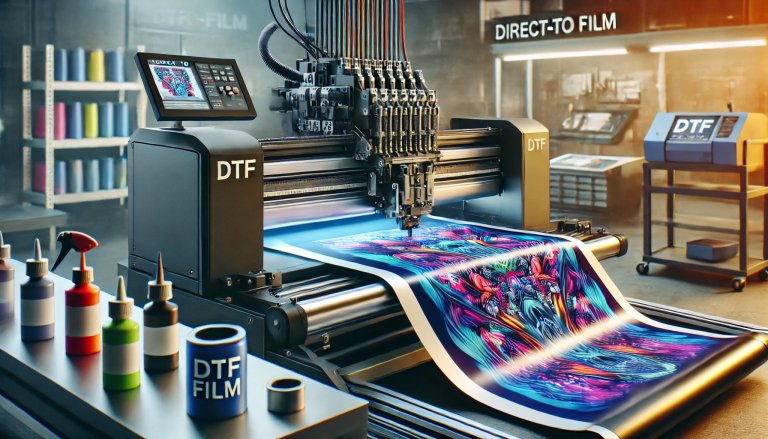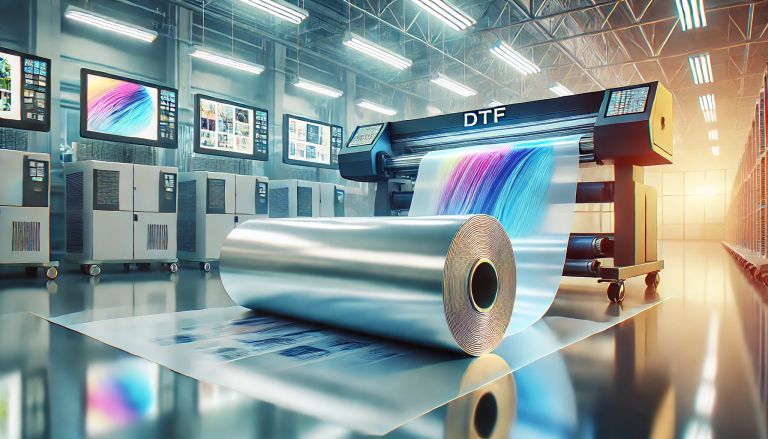“Bring your memories to life with A3 DTF Film Transfer – the ultimate way to preserve your treasured moments!” -MAXDTF- DTF Warm peel Manufacturer, PET Film DTF A3 Supplier, Made in china
Introduction
A3 DTF Film Transfer is a process of transferring film to digital formats. It is a cost-effective and efficient way to preserve and share your film memories. This process involves scanning the film frame-by-frame and converting it into a digital format such as MP4, AVI, or MOV. The resulting digital file can then be stored on a computer, hard drive, or other digital media. A3 DTF Film Transfer is a great way to preserve your film memories and share them with family and friends.
A Comprehensive Guide to A3 DTF Film Transfer: What You Need to Know
Film transfer is a process of converting the analog film into digital formats. It is a complex process that requires specialized equipment and expertise. A3 DTF (Digital Transfer Film) is a type of film transfer that is becoming increasingly popular due to its high-quality results and cost-effectiveness. In this guide, we will discuss the basics of A3 DTF film transfer, the equipment needed, and the steps involved in the process.
What is A3 DTF Film Transfer?
A3 DTF film transfer is a process of converting the analog film into digital formats. It is a type of film transfer that uses a specialized scanner to capture the image from the film and convert it into a digital format. The scanner is designed to capture the highest quality image possible, and the resulting digital file can be used for a variety of purposes, such as editing, archiving, and sharing.
What Equipment is Needed for A3 DTF Film Transfer?
The equipment needed for A3 DTF film transfer includes a specialized scanner, a computer, and software. The scanner is the most important piece of equipment, as it is responsible for capturing the image from the film and converting it into a digital format. The computer is used to store digital files and to run the software needed to edit and share the files.
What are the Steps Involved in A3 DTF Film Transfer?
The steps involved in A3 DTF film transfer include loading the film into the scanner, scanning the film, and transferring the digital files to a computer. The first step is to load the film into the scanner. This is done by placing the film onto the scanner’s platen and adjusting the settings to ensure the best possible image quality. The second step is to scan the film. This is done by pressing the scan button on the scanner and allowing it to capture the image from the film. The third step is to transfer the digital files to a computer. This is done by connecting the scanner to the computer and transferring the files using the appropriate software.
Conclusion
A3 DTF film transfer is a process of converting the analog film into digital formats. It is a type of film transfer that uses a specialized scanner to capture the image from the film and convert it into a digital format. The equipment needed for A3 DTF film transfer includes a specialized scanner, a computer, and software. The steps involved in A3 DTF film transfer include loading the film into the scanner, scanning the film, and transferring the digital files to a computer. With the right equipment and expertise, A3 DTF film transfer can provide high-quality results at a cost-effective price.
How to Choose the Right A3 DTF Film Transfer Service for Your Project
When it comes to transferring your film to digital, it is important to choose the right A3 DTF film transfer service for your project. A3 DTF (Digital Transfer Film) is a process that converts analog film into digital files, allowing you to view and edit your footage on a computer. The quality of the transfer is dependent on the quality of the equipment and the expertise of the technicians. Here are some tips to help you choose the right A3 DTF film transfer service for your project.
- Research the company: Before selecting a film transfer service, it is important to research the company. Look for reviews online and ask for references from previous customers. Make sure the company has experience with A3 DTF film transfer and that they use the latest technology and equipment.
- Ask about the transfer process: Ask the company about their transfer process and what type of equipment they use. Make sure they use high-quality scanners and that they have a secure system for transferring your film.
- Check the turnaround time: Ask the company about their turnaround time and make sure it is within your timeline. Some companies may offer rush services for an additional fee.
- Ask about the cost: Ask the company about their rates and make sure they are within your budget. Some companies may offer discounts for bulk orders or long-term projects.
- Ask about the output format: Ask the company about the output format they offer and make sure it is compatible with your editing software. Some companies may offer additional services such as color correction or audio restoration.
By following these tips, you can ensure that you choose the right A3 DTF film transfer service for your project. With the right service, you can ensure that your film is transferred with the highest quality and that it is compatible with your editing software.
Exploring the Benefits of A3 DTF Film Transfer for Professional Filmmakers
The advent of digital technology has revolutionized the way professional filmmakers create and distribute their work. One of the most popular methods of transferring film to digital formats is A3 DTF (Digital Transfer Film) film transfer. This process offers several advantages over traditional film transfer methods, making it an attractive option for filmmakers looking to maximize the quality of their work.
A3 DTF film transfer is a process that uses a specialized scanner to capture the image from a film negative or print. The scanner is designed to capture the highest quality image possible, resulting in a digital file that is virtually indistinguishable from the original film. This process also eliminates the need for costly film processing, as the digital file can be used directly in post-production.
The quality of the digital file produced by A3 DTF film transfer is significantly higher than that of traditional film transfer methods. This is because the scanner used in the process can capture a much higher-resolution image than traditional film transfer methods. This results in a digital file that is much sharper and more detailed than what would be produced by traditional methods.
Another advantage of A3 DTF film transfer is that it is much faster than traditional methods. The process can be completed in a fraction of the time it would take to transfer film using traditional methods. This makes it an ideal option for filmmakers who need to quickly transfer their work to digital formats.
Finally, A3 DTF film transfer is much more cost-effective than traditional methods. The cost of the scanner and the digital file produced is significantly lower than the cost of traditional film transfer methods. This makes it an attractive option for filmmakers who are looking to save money while still producing high-quality work.
In conclusion, A3 DTF film transfer offers several advantages over traditional film transfer methods. It produces a digital file of much higher quality than traditional methods, is much faster, and is more cost-effective. For these reasons, it is an attractive option for professional filmmakers looking to maximize the quality of their work.
Conclusion
A3 DTF Film transfer is a great way to preserve and share your memories. It is a cost-effective and efficient way to transfer your film to digital format, allowing you to enjoy your memories for years to come. With its high-quality results and easy-to-use process, A3 DTF Film transfer is an excellent choice for anyone looking to preserve their film memories.




